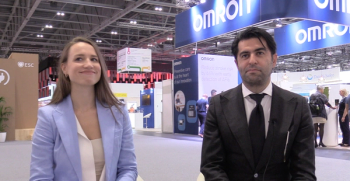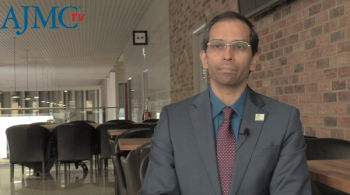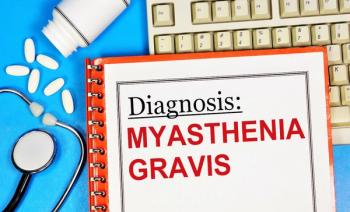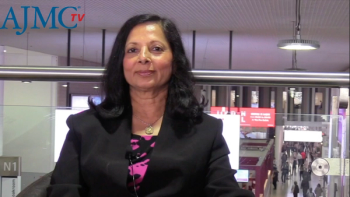
Educational principles implemented after 1998 may have led to lower mortality rates in patients with colorectal cancer (CRC) receiving care from doctors trained after that point.

Educational principles implemented after 1998 may have led to lower mortality rates in patients with colorectal cancer (CRC) receiving care from doctors trained after that point.

The eye condition, which can induce the loss of central vision, could see effective treatment options pending FDA approval.

The final report unveils actionable steps for integrating equity into health technology assessment.

A case report highlights a rare instance of parkinsonism following CAR T-cell therapy for multiple myeloma.

The first real-world study highlights benefits for adults aged 60 years and older who receive the respiratory syncytial virus (RSV) vaccine.

New findings add to the relationship between red meat and processed meat consumption and the risk of type 2 diabetes.

A recent study has found that higher serum levels of B-cell activating factor and anti-CCP3 are associated with a reduced risk of developing chronic lymphocytic leukemia (CLL), suggesting potential biomarkers for assessing CLL risk.

The HERCULES study of tolebrutinib is the first and only to show reduced confirmed disability progression at 6 months in nonrelapsing secondary progressive multiple sclerosis (MS).

An analysis on the state of pharmaceutical drug pricing revealed that, despite rebates, consumers' out-of-pocket costs have grown faster than their insurers' prices.

A comparative analysis investigating time from a drug's approval to insurance reimbursement found that the speed of this process in the US falls behind some European countries.

Patients with cancer who forego surgery have higher suicide incidence than those who undergo treatment, a study finds.

JT Lew, PharmD, MBA, highlights that the primary challenges for patients with multiple sclerosis (MS) in accessing prescribed medications include dealing with the shock of the diagnosis, navigating complex health plan benefits and out-of-pocket costs, and experiencing delays due to insurance barriers.

The annual meeting of oncology stakeholders presented by The American Journal of Managed Care® takes place September 12-13, 2024.

New research linking telomere shortening to myelodysplastic syndromes (MDS) offers substantial therapeutic implications for affected patients and MDS research.

September is National Recovery Month, and we are bringing you another limited-edition month-long podcast series with our Strategic Alliance Partner, UPMC Health Plan. In this first episode, we speak with Michael Lynch, MD, associate professor of emergency medicine at the University of Pittsburgh and an attending emergency physician and medical toxicologist at the University of Pittsburgh Medical Center.

The COVID-19 pandemic accelerated the adoption of telehealth nationwide, revealing significant benefits while also exposing ongoing challenges.

A heart failure program with a multidisciplinary team provides statistically significant improvements, and 2 countries determine the current prices of semaglutide are not cost-effective for secondary prevention of cardiovascular disease in patients with obesity, according to abstracts at the European Society of Cardiology (ESC) Congress 2024.

"Now we can actually focus and look at the disease itself, treat the heart disease itself, which is the plaque in the coronary arteries, as opposed to treating the risk of disease," Amir Ahmadi, MD, Mount Sinai, says in an interview at the European Society for Cardiology Congress.

Finerenone's approval by the FDA to treat type 2 diabetes–associated chronic kidney disease was supported by data from the phase 2 FIDELIO-DKD trial; now, the results of FINEARTS-HF show real-world application for patients living with heart failure with preserved ejection fraction or mildly reduced ejection fraction.

Deepak Bhatt, MD, Mount Sinai Heart, highlights the kidney-specific outcomes of the pivotal EMPACT-MI clinical trial in an interview at the 2024 European Society of Cardiology Congress.

The obesity epidemic is a global crisis, with experts from around the world emphasizing the importance of short-term strategies, long-term solutions, and multidisciplinary collaboration as they advocate for the heart health of their patients.

At the 25th International AIDS Conference, Emmanuel Nazaire Essam, MD, MPH, presented the analysis, "Medicaid Insurance Expansion and Its Association With HIV Outcomes in Nebraska, USA: An Observational Prospective Cohort Study."

Christopher Kramer, MD, vice president of the American College of Cardiology, discusses the newest data on finerenone for heart failure presented during the FINEARTS Hot Line session at the European Society of Cardiology Congress.

David Thompson, PhD, Queen’s University Belfast, expands on previous research he conducted that calls for cardiovascular health care providers to actively address care inequities evident in practice and policy.

Anna Mueller, MD, and Amir Ahmadi, MD, of Mount Sinai, highlight gaps in risk assessment tools for acute coronary syndrome, calling for more comprehensive screening strategies.

A joint session from the European Society of Cardiology and the World Heart Federation examined the impact of noise, climate change, and air pollution on cardiovascular disease.

A survey of patients with myasthenia gravis in 5 European countries suggests patients wait on average about a year after symptom onset before they are given an accurate diagnosis.

Researchers found low rates of patient involvement in first-line ovarian cancer treatment decisions in Europe and the US from 2017 to 2020 despite the increasing use of targeted therapies, like poly (ADP-ribose) polymerase inhibitors.

After moderating an emerging science session on acute ST-elevation myocardial infarction care, Dipti Itchhaporia, MD, American College of Cardiology, discussed the growing inclusivity in clinical trials through innovative digital tools and addressed the impact of GLP-1 therapies on cardiovascular treatment.

Pregnant and postpartum women who have cardiovascular (CV) disease represent a high-risk group of patients who require specialized care and intense monitoring for optimal health of them and their baby.

259 Prospect Plains Rd, Bldg H
Cranbury, NJ 08512
© 2025 MJH Life Sciences®
All rights reserved.
